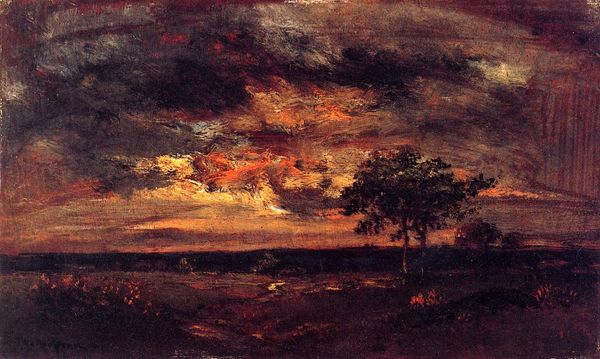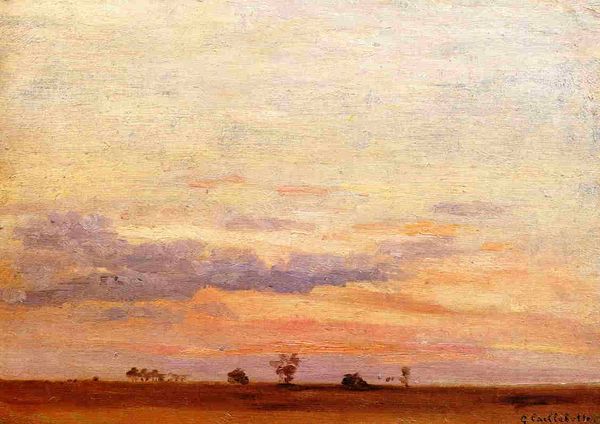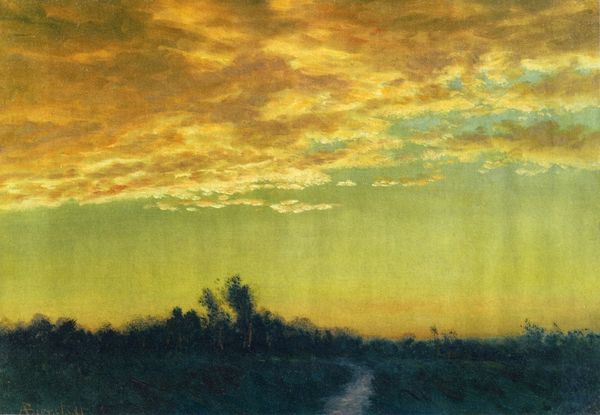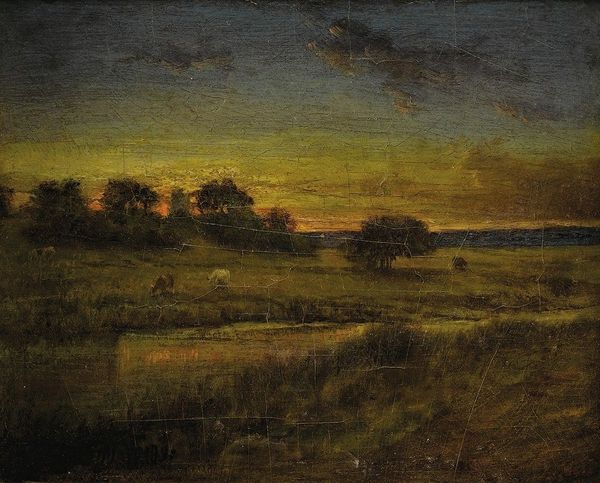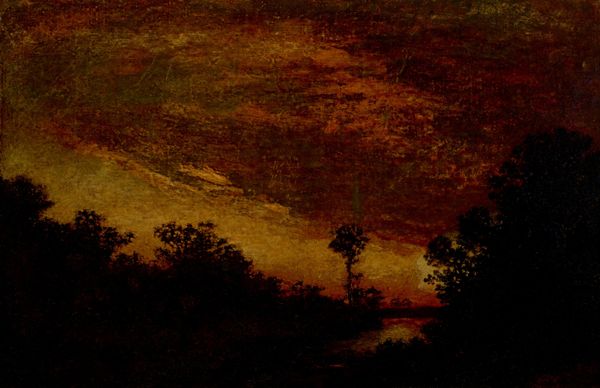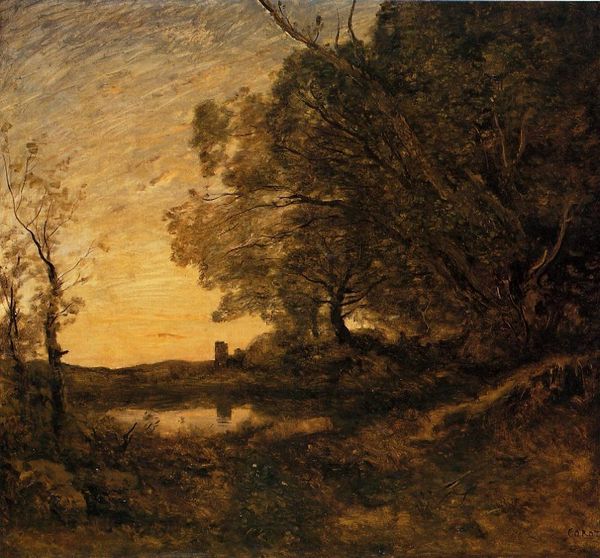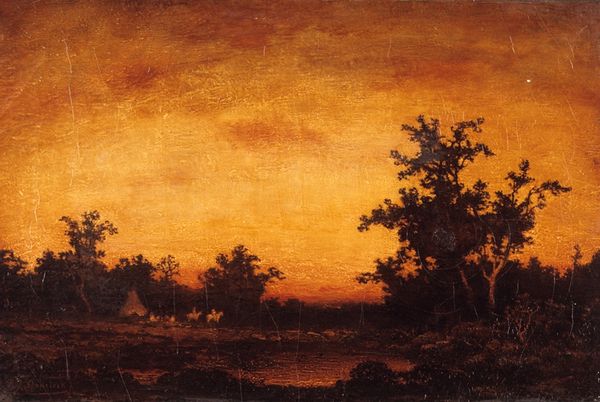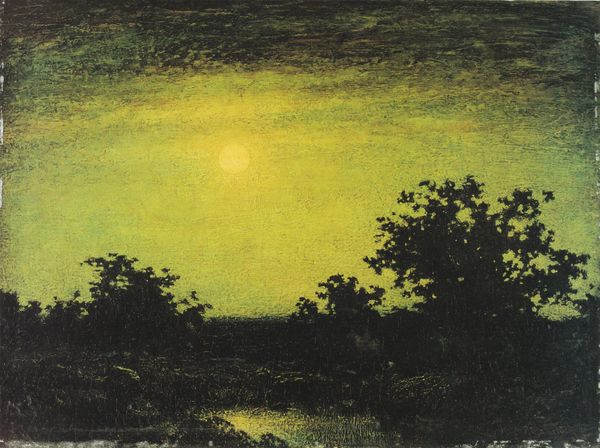
Dimensions: 19 x 37.5 cm
Copyright: Public domain
Editor: Standing here in front of Théodore Rousseau's "Twilight in Sologne" from 1867, rendered in oil on canvas, I'm struck by this overwhelming sense of tranquility, or perhaps even melancholy. The way the light catches the horizon…it’s really something. What do you see in this piece? Curator: Well, isn't it interesting how a mere arrangement of oil paints can conjure such deep emotion? For me, it’s the sheer breadth of feeling contained within those darkening hues. Rousseau captures that fleeting moment, that poignant intersection between day and night, doesn’t he? Look closely; do you sense a dialogue between light and shadow? Editor: Absolutely. There’s a real tension there, like nature holding its breath. Curator: Precisely! And that’s no accident. Rousseau, part of the Barbizon school, was deeply invested in the 'intimate landscape', believing nature held spiritual power, and painted *en plein air* to feel more connected to the landscape itself. It wasn't just about what was there, but how it felt to *be* there. Do you think he succeeded? Editor: I think he did! Looking at it makes me want to go there, into that moment. Curator: Maybe that’s the true magic of art, eh? A portal into someone else's experience, or a forgotten corner of your own. This piece feels less like a painting and more like a memory, half-formed, shimmering just out of reach. Editor: It definitely leaves a lingering impression, something to ponder. Curator: Indeed. It reminds me of Wordsworth’s lines “... that best portion of a good man's life; His little, nameless, unremembered, acts of kindness and of love.” Perhaps that’s the real Sologne: those small moments, illuminated against the vast canvas of existence.
Comments
No comments
Be the first to comment and join the conversation on the ultimate creative platform.
